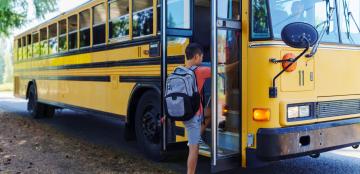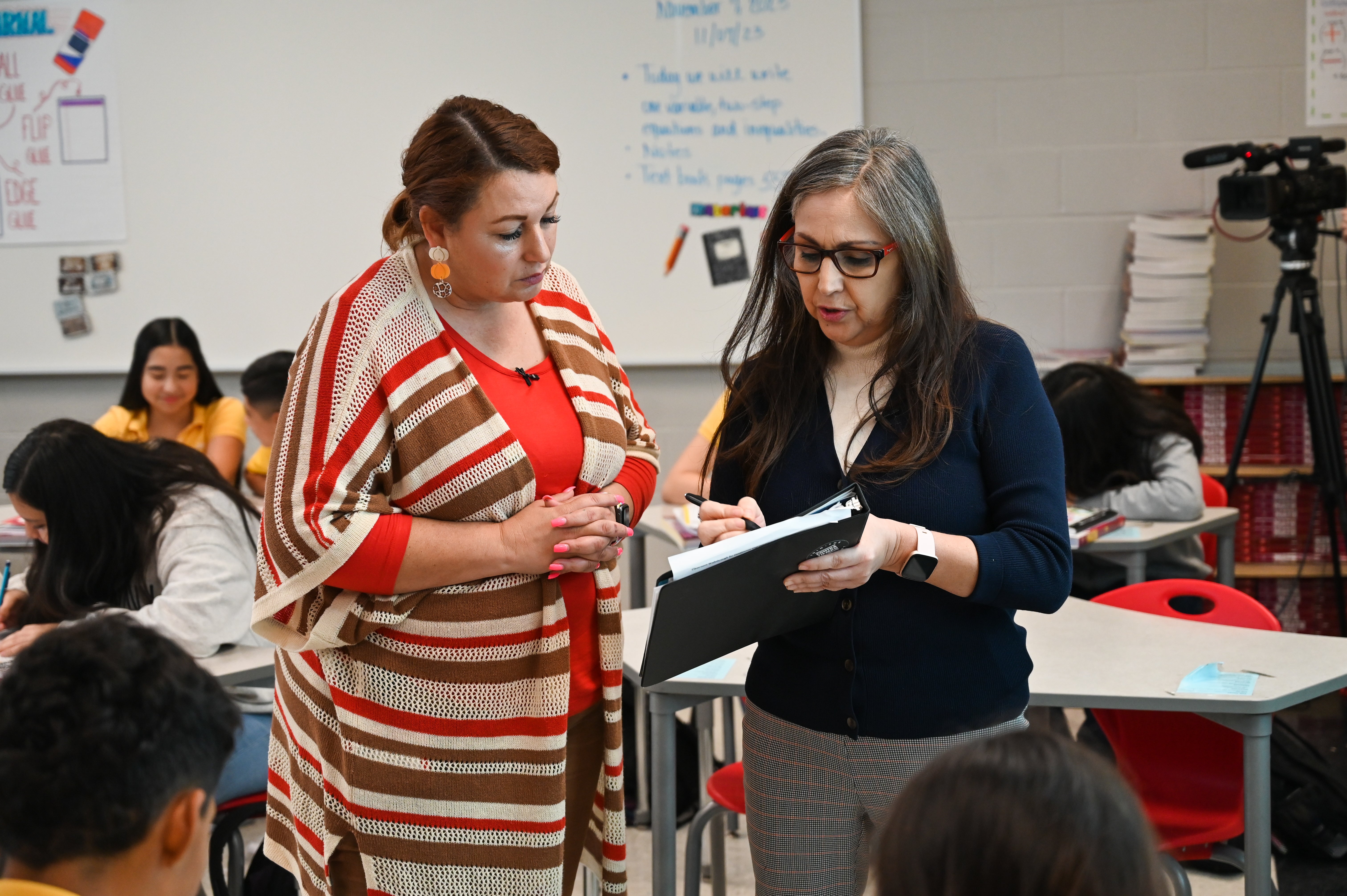
A Look Back: The Rural School Network
After a three-year term, the Rural School Network successfully concluded their last professional learning session this past December. Supported by the Greater Texas Foundation, the initiative was created to boost student success in mathematics at critical transition points, specifically in rural schools that are often overlooked.
Centered on four school districts in the Coastal Bend region of Texas—Nixon-Smiley, Premont, Skidmore-Tynan, and Refugio—the Charles A. Dana Center focused on algebra readiness with data-driven professional learning. Although systemic barriers, such as competing demands and lack of resources, impacted project scope, the initiative was successful in providing strategies and practices to support their unique needs.
Professional Learning for Educators
Since rural educators have few professional learning opportunities, they took great interest in professional learning that was both relevant and continuous. Teachers who participated in the network were excited to engage in professional learning sessions in the summer and on Saturdays.
“As rural teachers must often travel longer distances to attend professional learning, it adds a substantial amount to the cost of the event. Additionally, professional learning opportunities that are in or near the rural districts are many times a one-time event. This is not the best practice if looking for long-term systemic changes,” said Mary Davis, project lead and professional learning and implementation specialist at the Dana Center.
The network provided opportunities for teachers to share ideas, challenges, and resources across districts. Collaboration, learning, and planning with colleagues, however, continued to be a challenge since the schools had a small number of staff in each content area, suggesting a need for better job embedded structures for professional learning.
Competing Demands
High teacher turnover and the need to add nonteaching responsibilities were common obstacles in these rural communities. Staff turnovers led to disruptions in planned network activities and created difficulties in holding off-campus professional learning. This issue was compounded when educators had overlapping roles or nontraditional responsibilities such as filling in as substitute teachers, mowing the school property, and even providing childcare.
Bonds in Rural Schools
Despite challenging conditions, rural educators were extremely resourceful and demonstrated an interpersonal approach to student success. During school visits, Mary noted how superintendents or administrators called students by name, sharing anecdotal stories of their relationship with other family members they knew or taught in the past. Among teachers, discussions on vertical alignment were also commonplace since middle and high school classrooms were housed in the same or adjacent buildings.
What Supports Rural Schools the Most
The Rural School Network is the first initiative at the Dana Center that focused on developing a regional collective of rural districts facing similar issues. A few strategies and practices emerged as promising ways to support their unique needs.
Personalized Professional Learning
The Classroom Practice Study (CP Study) was introduced to network participants as a way to help them understand key components of high-quality practice in math classrooms. It provides a clear picture of what’s going well in classrooms and which areas need improvement. As participants shared their experiences with the implementation of CP Study, they conveyed the value of its systemic approach to continuous improvement. One administrator noted how CP Study “really helped us gather information about what's going on in our classrooms.”
Continuous Improvement Approach
The professional learning team pivoted to provide more one-on-one teaching assistance in classrooms since off-campus professional learning was impractical. While a variety of teaching strategies were shared in campus professional learning, the team determined that model teaching was the best driver for improvement.

"Model teaching helped the teachers really make a mindset shift and recognize that their students are capable of so much more than they previously believed. Once the teachers saw it in their own students, they were more likely to implement the practices they learned in professional learning," said Mary. Teachers in all four districts discussed how they began to release control of the classroom so that students could talk, share, and take ownership of their learning.
One teacher shared, 'I've been making sure that my kids are collaborating a lot more, talking in their groups, just trying to figure it out without me spoon-feeding it all to them.'
Adaptable and Flexible Planning
The Rural School Network uncovered growth areas on how to calibrate program offerings to fit the needs of rural districts. “Rural districts are unique. The same solutions used in urban or suburban areas won’t always work, so we need to adapt accordingly,” said Shelly LeDoux, director of professional learning and implementation at the Dana Center.
It’s essential to understand existing conditions thoroughly when planning for improvement work in a specific district or school. Background data on curriculum use, teacher certification, past and current initiatives, and teacher turnover rate can help determine the approach to professional learning, leadership support, and resources. Since each rural school and district comes with unique circumstances, solely relying on general data from the state or region is not always helpful.
Key Takeaways
Participants described the Rural School Network as enjoyable, informative, and a useful experience to better engage students in learning. Seventy-two percent of teachers reported using strategies to increase discourse and group work with more fidelity after participating in the network. “The growing confidence of teachers using newly learned pedagogies is already evident and seen in classroom walks,” said Mary. However, teachers also revealed how competing demands impacted their capacity to implement practices and strategies regularly.
A powerful outcome of the network activities included better communication between leaders and teachers about instructional practices and student engagement. “To see meaningful changes in teaching and learning, it’s important to get educators across a system working towards a shared vision of student-centered learning,” said Shelly LeDoux.
The Rural School Network brought awareness to why rural schools need our support, and, through on-the-ground activities, the Dana Center learned strategies for future work with rural communities. With rural students making up roughly 20% of the student population in the United States, and 37.1% of the student population in Texas, the Dana Center looks forward to working with and learning from other rural school districts.
About the Author
Genesis Moreno
It’s been both a challenge and an incredible joy to discover the right combination of words to share an idea. Dedicating my career to exploring creativity has led me to meaningful work that empowers others. Working at the Charles A. Dana Center is where my passion for purpose and creativity meet.
Get in Touch
At the Charles A. Dana Center, we envision a future where each and every student, regardless of their background or zip code, can experience the power and joy of mathematics, science, and literacy in ways that are meaningful and relevant to their futures.

